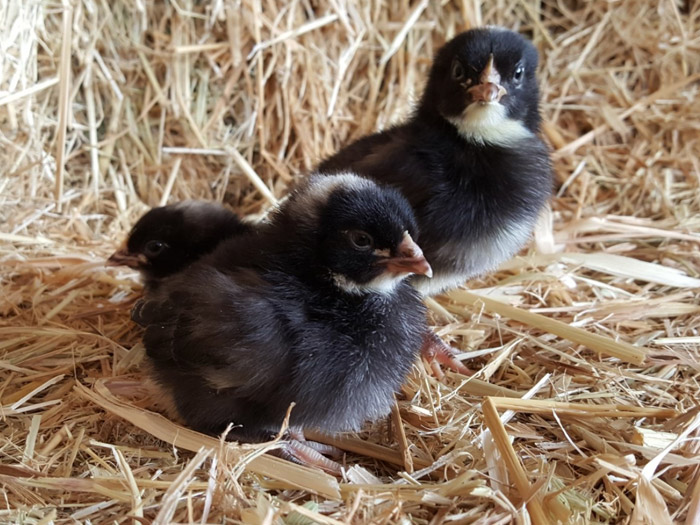If you decided to raise backyard chickens this year, you may be starting with chicks. Starting chicks stands as the most challenging aspect of backyard chickens, and proper preparation is key to success. We have started thousands of chicks over the years and have had many good years and also a few disasters that perhaps could have been avoided. In this article, I’ll provide some key lessons and points so your experience with starting chicks can be as pain-free as possible.
Where to get chicks
If you order chicks from a hatchery or dealer, make sure to order well ahead of time. Fehrway feeds in Ridgeville and Horizon Livestock in Steinbach are two good local options. You will pick up the chicks when they are just hours old, the same day they hatch.
If you already have hens and a rooster, another option might be letting one of your laying hens sit on her own eggs. (It might happen naturally if they are free-range in the summer.) In this case, the hen will do most of the initial work of caring for the chicks herself. If you choose this option, there’s a risk that the hen will not brood for the entire 21 days or not brood exactly when you want her to. Plus, there’s no guarantee you’ll end up with the number of chickens you wanted. Some breeds are instinctively broodier than others, so this may not work with all chickens.
We’ve borrowed a neighbour’s incubator and hatched our own chicks, which was a cool experience for our family. You may be able to find fertilized eggs from a farmer neighbour or Kijiji to incubate. The incubator simulates a mother sitting on her eggs by regulating humidity and temperature. It’s important to follow directions well; there are plenty of online resources and you-tube videos to help you out.
How to prepare for chicks
If chicks have a bad first few hours of life, it can weaken them, affecting them negatively throughout their life. Temperature is one of the most important factors. We usually use a cardboard ring to keep the chickens in a small area with a heat lamp. Additional heaters can help keep the temperature constant in the 32-to-35-degree range. If your barn is drafty, you can start them in your garage or even house. (Don’t worry, you can move them out by the time they get too active and/or smelly.) Heat lamps provide localized heat; however, it may be slightly too cool a few meters away from the heat lamp. Ensure all the chicks have enough room under the lamp – you may need more than one. You may also want a plan for a power outage which could include a propane heater or a generator.
Chicks need to be started on a specialized starter feed that is higher in protein and smaller granules than regular chicken feed. Clean water should be supplied at all times, and you may want to add electrolytes and vitamins for a boost on the first few days. You can buy chick starter and packets of electrolytes at any local feed store.
We’ve found that feeders and waterers should be placed in close proximity to the chicks, so they don’t have to search around for it.
What you need to know the first few days
If you buy your chicks, taking them home on the first day is exciting (and they usually make quite the racket). Just remember not to let them get a chill on their ride home and provide them with food and water as soon as you possibly can. Check on the chicks every few hours for the first few days. We even recommend doing night checks for the first couple of nights. Ensure the temperature is very constant for the first week. We generally rely on observation more than the thermometer. If the chicks are spread out and not spending time under the heat lamp, it’s likely because it’s too hot. If they are huddling together, they may be trying to keep warm. Adjust the temperature accordingly. After a week, you can slowly reduce the temperature and by about three weeks, the chickens will be fine at a normal room temperature.
What happens next
At five or six weeks of age, when the chickens fully feather, they can start going outside if that’s what you planned for them. At this point, they can also switch to regular grower feed. Always make sure they inhabit a well-ventilated area, and check them several times a day, making sure they have feed and water and look comfortable.
Starting chicks is not complicated, but it does require dedicated care and attention – especially during the first three weeks. With these simple guidelines your backyard chicken venture will be off to a good start.
For more on keeping backyard chickens, see our previous post in the series.




